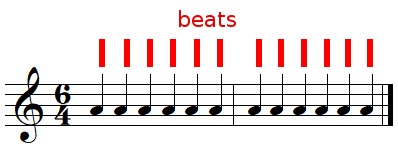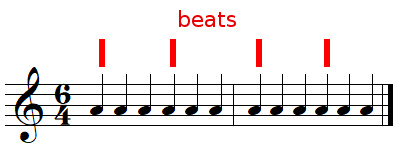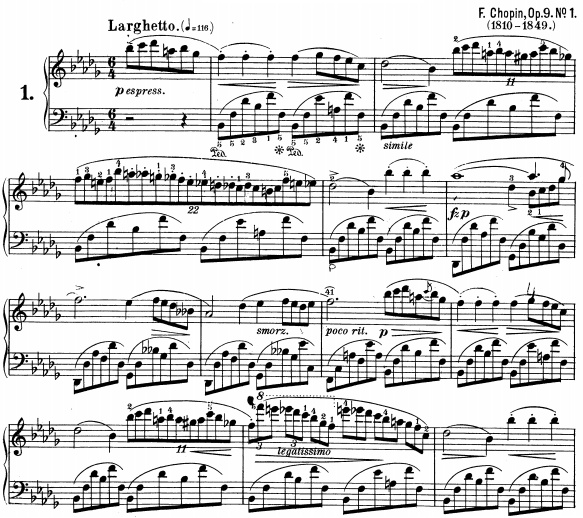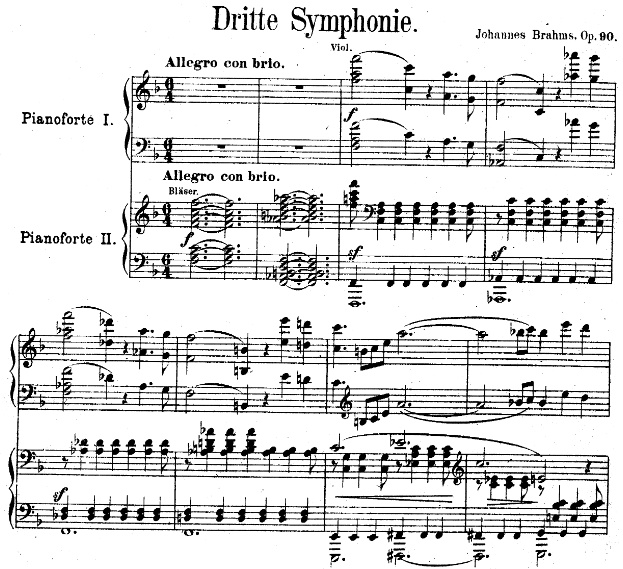Explanation of 6/4 time signature
In the article time signature, this is explained that:
- the top number indicates the number of time units in a measure (bar 
- the bottom number determines the unit of time.
We can visually translate 6/4 like this:

That is to say that there are 6 quarter notes 

But, what is not indicated in this time signature is that can to a simple meter measure or a compound meter. In the article simple and compound meter, you learned that:
- Simple meter (or simple time) is a meter where each beat in a measure can be subdivided by two.
- Compound meter (or compound time) is a meter where each beat in a measure can be subdivided by three.
A beat with 6/4 time signature can be divided by two or three, it depends on the context.
Here are the beats for a simple meter 

- 1 quarter note 

- 2 eighth notes 

- 4 sixteenth notes 

and so on...
Here are the beats for a compound meter 

- 3 quarter notes 

- 6 eighth notes 

- 12 sixteenth notes 

and so on...
Examples found in famous works
Chopin, Nocturne opus 9 n°1
Frédéric Chopin's Nocturne opus 9 n°1 uses the 6/4 time signature (simple meter in which 1 

(Royalty free sample performed by pianist Samson François in 1964, Creative Commons Zero 1.0 license, source)
In this excerpt, composed in the main key of B flat minor you will notice the use of double flats (measure 7), and the use of tuplets (measures 3, 4 and 11) and eighth note triplets (measure 12).
Brahms, Symphony No.3, Allegro con brio
The first movement, entitled Allegro con brio, of Brahms' Symphony No.3 start with a 


Royalty-free sound sample recorded by the Czech National Symphony Orchestra (source, Creative Commons Attribution 3.0 license)


